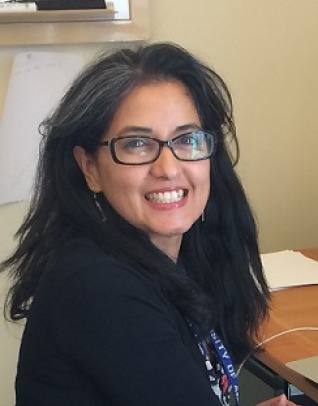Economics
Overview
How do markets distribute goods and services produced? Is a free four-year college education the answer to growing economic inequality? How does poverty shape individual options? Can we balance environmental sustainability with economic growth? What policies can address the water crisis around the world? Which tax works best to alleviate the housing shortage in California? What caused the largest financial recession in the postwar era in 2008? Could the government have done something to prevent it? What role does a Central Bank such as the Federal Reserve in the United States play in an economy? Why does Germany have a higher percentage of working age people than the United States while facing similar globalization and technology trends? Why has the trade deficit been so high in the United States while China has experienced a trade surplus? These are but a sample of questions we ask in the realm of economics.
Economics provides a way of thinking about the forces that shape our daily lives. Our curriculum emphasizes economic theory, statistical analysis and the role of public policy in addressing economic and social problems. Students may specialize in development economics, environmental economics, financial economics, international economics, or public economics. Our courses prepare students for pursuing a wide array of career paths in business, international development, education, public policy, and environment.
Our Faculty



Course Offerings
Principles of Economics introduces to all the major fields within economics. The upper division classes can be divided into skill-based classes and issue-based classes. While all of the economics classes develop analytical skills, the skill-based classes focus almost entirely on skill development.
Same as INTS 100
This course provides a survey of economics principles within both microeconomics and macroeconomics. It introduces students to the basic economic concepts that are fundamental to understanding economic observations in daily life, such as supply, demand, price, market equilibrium, national income, unemployment, inflation, economic growth, international trade, and so on. Through discussions of contemporary economic issues and policies, students will learn how households and firms make decisions under certain economic systems, how individual markets and the national and international economy operate, and how government policies affect economic outcomes.
Same as INTS 262
This course provides a survey of China’s economic development under the centrally-planned socialist system since 1949, and the on-going economic reform since 1978. China’s role in regional economic growth and its economic relationship with the world economy will also be addressed.
This course examines the modern theories of the market system, demand and production, and the interactions between consumers and firms under various market conditions. Students learn how market forces determine prices, resource allocation, and income distribution. Students are also introduced to public policy evaluation and welfare economics.
This course introduces the factors that determine national income, employment, unemployment, inflation, and economic growth. The course also examines the tools of monetary and fiscal policy available to policy makers and the effects of policy on the economy.
In this course, students are introduced to the analysis of financial assets and institutions. The course emphasizes modern asset pricing theory and the role of financial intermediaries, and their regulation in the financial system. Topics covered include net present value calculations, asset pricing theories, financial derivatives, the efficient market theory, the term structure of interest rates, and banking.
This course is an introduction to the design and implementation of public finance in high-income countries as well as in developing economies. Topics include the role and size of the public sector, rationale for public sector interventions (such as market failure and distributional concerns), issues of tax compliance and enforcement, tax reform, public expenditure policy (such as social protection programs), fiscal balance and deficit financing, fiscal decentralization, and intergovernmental fiscal relations. Students will apply these theories in order to critically evaluate current policy issues in areas of education, healthcare, environment, and welfare reform.
This course investigates the economic performance and development of the economies of Pacific Asia; covering Japan, Asian NIEs (Hong Kong, Taiwan, South Korea, and Singapore), ASEAN-4 (Malaysia, Thailand, Indonesia, and the Philippines), China, and Vietnam. Through this class, students will gain factual knowledge on the economic characteristics of and policies on these economies’ structural change, economic growth, and development; and the economic relationship among these economies as well as between this region and the world economy in the era of globalization. The emphasis of this course is on the application of proper economic analytical tools to examine the effectiveness of various development strategies and policies on each economy’s development process. The applicability of the development experiences of these economies to other developing countries will also be briefly discussed.
Same as INTS 361
This course introduces students to one of the major issues of the world economy: the process of economic development. It provides an understanding of the causes and consequences of underdevelopment and poverty in the context of developing economies and attempts to explore possible means to overcome obstacles to development. Topics covered include: economic growth, sources of growth (capital formation, population and human capital, technology), economic structural change, income distribution, institutional factors, development strategies, government policies, international trade, foreign aid, foreign investment, and debt crisis.
Same as INTS 362
This course provides an introduction to international economic concepts and contemporary issues related to international trade and international finances. It illustrates the philosophical foundations and historical context of various theories of trade and finance and their applications to trade policies and trade relations. Other areas examined include: balance of payment, determination of exchange rate, foreign investment, multinational enterprises, financial market internationalization, international economic policies, and international economic organizations. Emphasis is on the critical evaluation of and debates on current trade policies and other international economic issues, such as North-South trade relations, free trade vs. protectionism, and international resources movement.
Same as ENVST 360
This upper division course combines theory and policy application in studying environmental issues from an economist’s perspective. Major topics include theoretical and applied modeling of economy-environment relations, causes and consequences of market failure affecting environmental services, design and evaluation of environmental policy instruments, and the political economy of environmental policy. Students will learn to identify the economic components of an environmental issue, analyze the effects of human economic activity on the environment, and to present and discuss the pros and cons of various environmental policies.
Alumni Perspectives
A Passion for Economics
I love that Soka is a liberal arts college, with a passion in motivating a diverse group of students from all four corners of the world.




